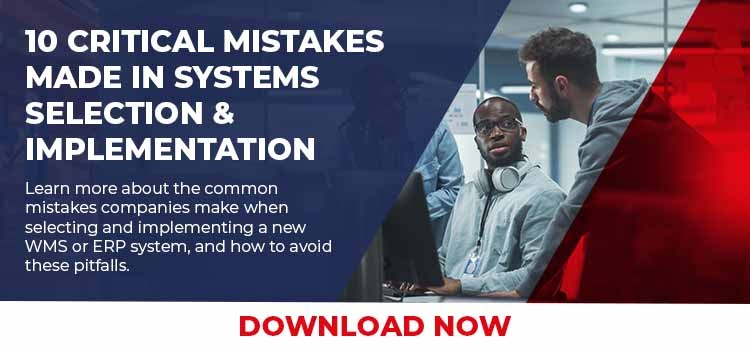In most businesses the transition to a new order management system (OMS) does not occur frequently.  One of the main keys for your OMS implementation to be successful is to be sure you have tasks and assignments for developing training materials and standard operating procedures. The new OMS will affect the productivity of many departments, including contact center, distributoin center, accounting, merchandising, marketing and management reporting.
One of the main keys for your OMS implementation to be successful is to be sure you have tasks and assignments for developing training materials and standard operating procedures. The new OMS will affect the productivity of many departments, including contact center, distributoin center, accounting, merchandising, marketing and management reporting.
Some companies often struggle for six to eight months after implementation to regain their productivity and proficiency levels. Here’s how your company can shorten the order management system learning curve.
 There are several types of documentation and training to consider: system user documentation provides information on core system functionality (provided by the vendor); training materials which you will need to develop to teach your employees how to use the OMS in your business; and Standard Operating Procedures which include your company policies and their use with the system.
There are several types of documentation and training to consider: system user documentation provides information on core system functionality (provided by the vendor); training materials which you will need to develop to teach your employees how to use the OMS in your business; and Standard Operating Procedures which include your company policies and their use with the system.
The vendor’s contractual responsibility is typically to “train the trainer”. This means training a limited number of people (less than 5) that can internally become the nucleus of your training team. Don’t under-estimate the amount of training hours you’ll need; in most system implementation plans it is minimal.
The development of training materials and the media used to teach the employees is your responsibility. While the vendor will provide documentation about how the system performs the base functionality, you need to have department managers take this documentation and produce training materials that detail the specifics on how your company is going to utilize the system. These training materials will detail which options to choose for a given scenario.
Identify who your “Super Users” will be. These are the business users you are going to rely on to implement the order management system and train the organization. They should represent call center, distribution center, merchandising, marketing, accounting, and the reporting analysis to manage the business.
Start early to understand the quality of the vendor’s online and printed systems documentation. This is the base for the development of your company’s specific training documentation.
Give considerable thought to your company’s internal training skills and the documentation you have developed before. Do you need to hire a training professional? Are there contractors that know the OMS and can help you develop the needed materials?
One effective approach we have seen is to list out every transaction and their associated functions and develop a matrix of order management system users. After formal training in a classroom environment each user can continue to become familiar on their own with the training manual. In this manner the department managers could plan and track the progress of each person.
Larger companies with a formal training department will possess the skills and multimedia talent to develop structured training programs about the new OMS. Call centers which need to train a larger number of users, potentially across multiple shifts, can make use of extended multimedia approaches.
Consider how you can use a conference room pilot test environment, normally used for total systems testing, to also be a training and procedures test tool. By running the entire system for testing, the department managers observe the entire system and the effects of all transactions; and you can develop and adjust the training and procedures accordingly.
With the change over to the new order management system, what should you do to upgrade your Standard Operating Procedures? How do these procedures need to change with the new OMS?
Within a couple weeks after the “Go Live,” follow up within each department to see what additional training is needed. After you have the basic training completed, vendors often offer advanced classes in certain functional areas such as accounting and query/report writing.
Start your training materials preparation early and make sure you have all the bases and functions covered. In the end you’ll cut down the learning curve.






SHARE